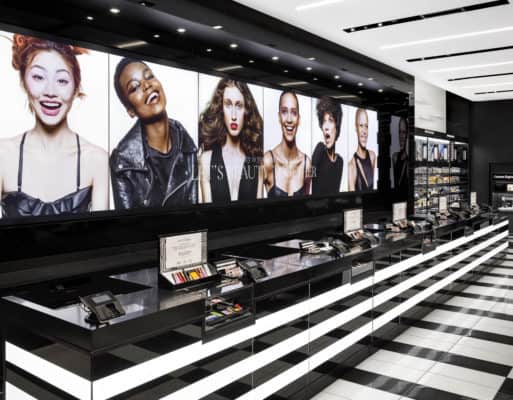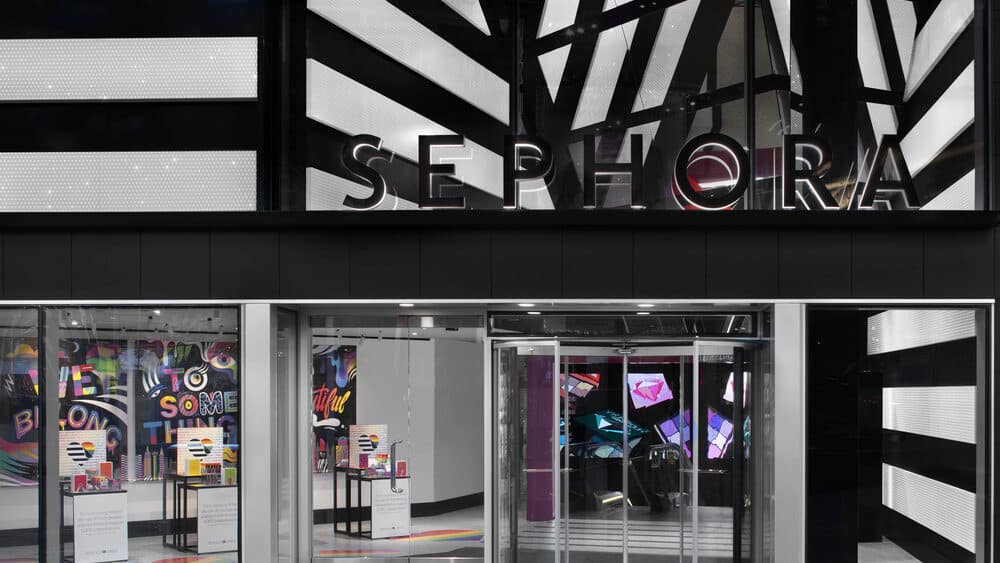[ad_1]
“Shopping while Black” is a real problem in America. At some point in our life, no matter our socio-economic status, we’ve all been a victim of it. You know, that instance when you enter a store and the employee follows you as if you’re shoplifting or gives you the side-eye as if you can’t afford anything in the shop.
“While all groups report experiencing unfair treatment in retail settings, it is a pernicious problem that Blacks in particular face. In fact, nearly two-thirds of Blacks surveyed in a 2018 Gallup Social Audit perceive that Black shoppers are treated unfairly while shopping. When asked about the contexts that they encounter unfair treatment, Blacks have consistently indicated that they encounter unfair treatment due to their race at higher rates while shopping than any other context, even when compared to interactions with the police and while at work,” explains Dr. Cassi Pittman Claytor, an African-American Harvard-trained sociologist whose work primarily examines questions of racial inequality.
Recently, many brands have extended verbal support to the African-American community as they learn more of the systemic racism that Blacks endure. But what our community truly needs is actionable allyship that will affect real change. A few corporations, including Sephora, have addressed this and have pulled up. The beauty behemoth has formed its own group of equity advisors and equity partners, which comprises of advocates, thought-leaders and strategists on race and culture such as, April Reign (one of the founders of #OscarsSoWhite movement) and Leah Daughtry (a pastor of The House of the Lord Church in Washington, DC , and former Chief Executive Officer of the Democratic National Convention Committee) to help offer valuable insight and guide the beauty behemoth on its journey to transform the landscape. It also commissioned a retail bias study to help shape its actions in countering discrimination and fostering equality and racism in retail.
EBONY chatted with Sephora’s Chief Marketing Officer Deborah Yeh on what the company is doing to pull up and make real change in the beauty and retail industry.
EBONY: Last year, the musician SZA tweeted that she had been racially profiled at Sephora. What has the brand done to educate its workforce on such biases?
DEBORAH YEH: Diversity, equity and inclusion have been long-standing values and core to our mission since Sephora’s founding as a new kind of beauty company. More than a year ago we initiated a renewed commitment to building a more inclusive beauty community through our We Belong to Something Beautiful program. SZA’s experience highlighted the importance and urgency of this work, and since last summer, all of our employees have participated in [more than 10] training sessions on mitigating bias and improving client service. These workshops within our continuous education program were developed with experts from the NeuroLeadership Institute. The work is not going to stop with just these trainings though. While continuous education and learning is a critical piece as we work toward becoming a more inclusive company for our clients and team members, we recognize that trainings must be just one part of the solution, in addition to reforming our company policies and becoming a better ally in our communities.
EBONY: The designer Aurora James recently started the 15% Pledge, calling for major retailers and corporations to commit 15% of their shelf space to Black-owned businesses. Sephora was one of the first companies to sign on. What steps has Sephora taken so far? And, what kind of support system will the company be providing to these promising Black-owned beauty and wellness companies to grow and succeed?
YEH: We are taking a look at our entire business, from top to bottom, to understand how we can better support Black-owned companies. It’s not just about buying what’s out there and putting products on the shelves in order to hit a target; instead, we plan to address the full pipeline. How do we meet aspiring entrepreneurs and help them build a business plan to be ready for retail? How do we ensure the pitch process is equitable and supportive? Once a brand lands a Sephora distribution deal, how do we help grow the business together? Sephora is assembling a team focused on this initiative, bringing the collective knowledge of our experienced leaders to the table, and partnering with experts including Aurora and industry leaders so that the best learnings can be shared with founders. We will provide connections to and support from funders and the venture capitalist community, so these companies have the financial resources they need, and often don’t have access to. And we will help launch and develop Black-owned businesses with support for long-term success as unique and independent brands.We are also using our Accelerate incubation program, which was originally started to cultivate female-owned brands, to now focus on women of color. Since its inception five years ago, our Accelerate program has been dedicated to building up a community of female founders in beauty, with the goal of helping them get to the next stages of their plans. After reaching our goal of supporting 50 female founders by 2020, we are confident this program will help us support more Black-owned businesses and meet the 15% Pledge.
EBONY: What are the Black-owned brands currently carried at Sephora stores?
YEH: We currently offer Fenty Beauty, Pat McGrath Labs, Briogeo, Adwoa Beauty, GOLDE, KNC Beauty and Shani Darden Skin Care. This is only the start—we know with over 290 brands we can and will be doing more.

Image: Courtesy of Sephora
EBONY: What steps is Sephora taking to diversify itself at the corporate level?
YEH: Several weeks ago, we made a public commitment to take actions from recruiting to elevating our Black and African-American team members throughout all levels of the company, including leadership, in response to the #PullUpForChange challenge. Today, our executive level leadership team includes team members from our corporate offices, stores and distribution teams, and is currently 45% people of color and 6% Black or African American. Our eight-member operating committee has three people of color, four women, but no Black executives. We have been working actively to build a diverse workforce. For instance, in the Marketing department, we have built specialized partnerships with organizations focused on elevating underrepresented talent in marketing and advertising. When we recruit, we interview at least one diverse candidate for each position, if not more. And, we are working extensively with our employee resource groups to support the advancement of our employees while also ensuring that their diverse insights are being utilized.
EBONY: Sephora recently commissioned a national study on racial bias in retail. Why did it do so, and can you tell us a little more about it?
DR. CASSI PITTMAN CLAYTOR: I was invited to partake because of my expertise studying retail racism. But I am just one part of a larger research team that also includes Dr. David Crocket, and Whitney Dunlap-Fowler. (I would be remiss if I did not note that key insight was also offered by Sephora’s Equity Advisors.)The study is multifaceted and includes three parts: a comprehensive overview of academic research on racial bias and racism in the marketplace; a qualitative component, which consists of interviews with customers and retail workers; and a quantitative component, which is a national social survey of customers and retail workers. Drawing on previous scholarship to ground the study allowed us to hone in on what would be the focus of the qualitative and quantitative portions of research. By combining information gathered from both customers and retail workers, we set out to get a more complete picture of how racial bias and exclusionary treatment operate in the retail landscape.
YEH: [Sephora] commissioned this first-of-its-kind study to better understand all the ways racial bias manifests in the retail industry– at Sephora and beyond. The study, which is led by two experts on race and discrimination in commerce, Dr. Cassi Pittman Claytor and Dr. David Crockett, is aimed at identifying the prevalence, nuances and impact of racial bias in retail and determining ways that we (and other retailers) can address it. Currently, we are conducting both in-depth interviews and large-scale surveys with retail shoppers and retail employees to better understand their experiences . A study of this scale will be broad enough to understand differences between groups of consumers, see where clients are likely to be disappointed vs. delighted, and help us prioritize tangible solutions. Our plan is to share highlights with our industry as well. We have a number of trade association partners like RILA and Open to All who know how important inclusion is to the retail business. We may have category differences—shopping for makeup may be different than picking up pet food—but we anticipate there will be learnings for all.
EBONY: What are the takeaways from the study?
YEH: Following the completion of our literature review phase, we have identified three key takeaways. First, racial bias is pervasive across all retail settings and impacts all customers at every stage of the shopping experience. Second, we found that racially biased and exclusionary treatment (RBET) affects customers’ journeys in two ways: As a “tax,” meaning challenges which raise the emotional cost and sometimes actual cost of the shopping experience for clients of color; as a set of “barriers,” which are industry-wide policies that adversely affect entire classes of consumers and block their progress. Examples include: Gatekeeping—making assumptions about which consumers are undesirable, which leads to patterns of inequality and exclusion. Curating—offering specialized knowledge or services for a select group, which can disadvantage and discourage consumers. Product availability and presentation—securing, displaying and/or merchandizing certain products in ways that create added burdens to the consumer and make the store less welcoming. Service failure—any of the many interactions between retail employees (sales staff, cashiers, loss prevention personnel, managers) and consumers can be potentially affected by racial bias and stereotypes that result in stigmatization/or discrimination. Third, consumers have adopted a range of coping mechanisms in response to racially biased treatment, the most common being to leave the store. This means that in addition to losing valuable customers, retailers also lose the opportunity to gather valuable client feedback and the chance to combat and prevent unjust treatment in the future.
EBONY: What does Sephora plan to do with the study’s learnings?
YEH: The goal is to identify the prevalence, nuances and impact of racial bias in retail, and implement policies that will combat it. We are already using the overall framework in this first phase of the study to map out the areas we want to focus on as an organization. We are training both our corporate and field staff on these concepts, so they know how to design and implement better client experiences. And as we complete the next phase of the work, we’ll get into even greater detail. This may include piloting potential changes, changing store policies or other actions rolled out over time. We look forward to sharing our plans and our results with our community throughout the coming year.
[ad_2]
Source link

